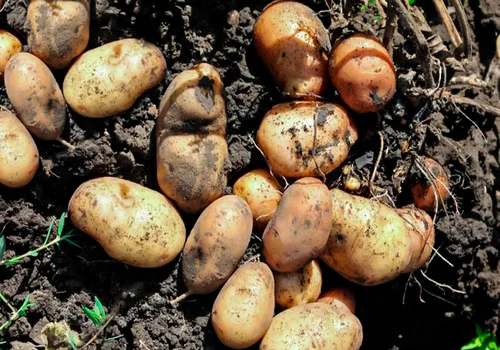Growing potatoes successfully involves more than just planting tubers; it requires understanding key techniques and secrets that can lead to a bountiful harvest. In this guide, we will delve into the essentials of potato cultivation, covering everything from selecting the right tubers to harvesting techniques. Whether you are a seasoned gardener or a beginner, this information will help you achieve impressive results.
Selecting the Ideal Potato Tubers
Choosing high-quality seed potatoes is crucial for a successful crop. Opt for tubers that are healthy and free from defects. Look for ones with multiple eyes, as these will promote better growth. Tubers with fewer eyes may not develop as robust plants. The presence of these eyes contributes to vigorous sprouting and ultimately results in larger and more plentiful potatoes.
Preparing for Planting
The timing of planting is essential. The best months to plant potatoes are August and September, as these months provide the optimal temperature range for initial growth and tuber development. Potatoes thrive in warm conditions during the early growth phase but require cooler temperatures as they develop to achieve larger tubers. Early planting ensures that you capitalize on the best growing conditions and avoid the peak of pest and fungal infestations.
Choosing the Right Containers and Soil Preparation
If you’re planting in containers or pots, ensure they have drainage holes to prevent waterlogging, which can lead to tuber rot. Place the potatoes in a well-ventilated area away from direct sunlight to encourage sprouting. For in-ground planting, prepare the soil by removing weeds and debris. Consider using organic matter, such as decomposed animal manure, which enriches the soil and helps maintain its fertility.
Planting Techniques
When planting, space the tubers about 10 to 20 cm apart, with a planting depth of 7 to 8 cm. This spacing allows for ample root and tuber development. Cover the tubers with soil, ensuring they are not exposed to sunlight, which can hinder growth. The soil should be kept moist but not waterlogged. Overwatering can lead to tuber rot and fungal diseases.
Managing Growth and Fertilization

As the potato plants grow, they will develop shoots and leaves. Covering these shoots with additional soil (hilling) promotes the formation of more tubers and protects them from sunlight. This practice also helps in managing pests and diseases. Organic fertilizers, such as compost or well-rotted manure, can be used to provide essential nutrients and support healthy growth.
Monitoring and Maintenance
Regularly check for signs of pests or diseases. Early detection allows for prompt intervention, which is crucial for maintaining plant health. Manage pests naturally by introducing beneficial insects or using organic sprays. Ensure the soil remains adequately moist, but allow it to dry slightly between watering to prevent root diseases.
Harvesting and Storing
Potatoes are ready for harvest when the foliage starts to yellow and die back. Gently dig up the tubers, taking care not to damage them. Allow them to cure in a cool, dry place for a few days before storing them in a dark, cool location. Proper curing and storage prevent sprouting and extend the shelf life of your potatoes.
Conclusion
Successful potato cultivation involves careful planning and attention to detail. By selecting quality seed potatoes, preparing the soil adequately, and managing growth effectively, you can achieve a plentiful harvest. Implement these techniques and enjoy the satisfaction of growing your own potatoes.






